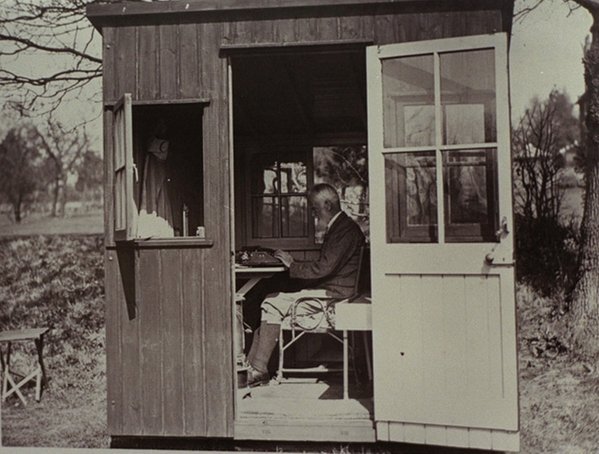Things I've quit doing at my desk
We need to think of our desks as workstations.
We do all sorts of activities at our desks that affect our ability to produce our best work.
Here are things I'm trying to quit doing at my desk.
1. Thinking
When you reflect on your most significant "Ah-Ha!" moments, how many of them occurred while you were staring at a screen?
If you're like me, your best thinking happens when you're not at your desk: taking a walk, going and asking another person for help, drinking a coffee, in the shower.
My best thinking doesn't happen while I'm sitting at my desk.
Your desk is for executing; do your thinking elsewhere.
2. Socializing
When I sit down at my desk, I want to be in work mode. I want to prioritize my most important tasks, and then complete them with the fastest velocity possible.
Socializing while I'm at my desk sullies the purity of the workstation.
This is why the water cooler is a brilliant social construct. When you want to hang out, you can get up from your workstation and go to the "socializing station." Every office should have a designated place to socialize; a location where team members can hang out, and talk informally.
3. Procrastinating
If you're like me, you're spending a lot of time at your desk checking Twitter, watching YouTube, checking email, and mindlessly read blog posts.
Taking breaks throughout my workday is essential. But I want to maintain the purity of my desk as a "place where work gets done."
If I need downtime, it's better for me to walk away from my desk.
When we catch ourselves procrastinating we should ask: "Why?" Are we procrastinating because we're tired? Hungry? Bored? Are we stuck on a problem? Are we just feeling lethargic and need to get up and move around?
Figure out what's at the source of your mindless net browsing, and deal with the problem.
4. Sitting
For the past 18 months I've been using a standing desk. I've realized that the best part isn't that I'm standing all day; it's that I'm not sitting. A standing desk allows you to stand, sit, lean, and put one leg up while you're at your workstation. Even better, I've felt more freedom to just walk away when I'm faced with a problem and need to do some thinking (or when I'm tired and need a break).
Follow the example of the classics
Well-known authors like George Barnard Shaw, Roald Dahl, and Virginia Woolf, maintained writing sheds.
These huts had one purpose: it's the place they went to write. They didn't do anything else there. Once they were done writing for the day, they would leave their workspace.
Modern writers, like Kunal Shandilya, have also discovered the benefits of using contextual zones to get work done:
I went from writing on my bed at home to only writing in the college library. I made the library a specific contextual zone for writing. Getting started with my writing seemed easier, and I was happier with the output.
We need to think of our desks in the same way: these are places where we get work done.
Cheers,
Justin Jackson
@mijustin
